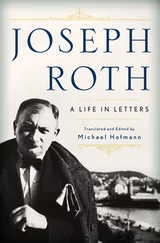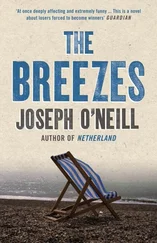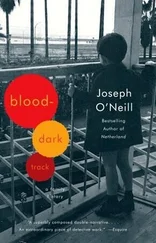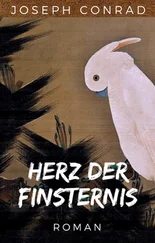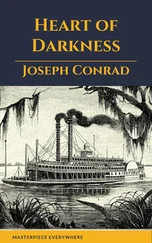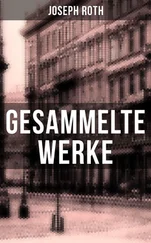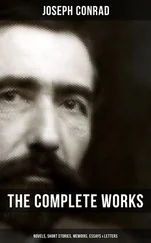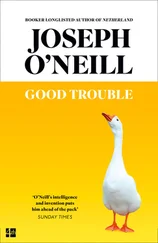“That’s great,” I said.
Chuck burst out laughing. “I know what you’re thinking: I’m out of my mind. But you haven’t heard the kicker.” He looked at me. “Ready? Global TV rights. A game between India and Pakistan in New York City? In a state-of-the-art arena with Liberty Tower in the background? Can you imagine the panning shots?” Chuck said almost furiously, “We’re thinking a TV and Internet viewership of seventy million in India alone. Seventy million. Do you have any idea how much money this would bring in? Coca-Cola, Nike, they’re all desperate to get at the South Asian market. We figure we’d break even in three, at most four years. And after that…” High on the Gowanus Expressway now, he waved an arm at the cold bright bay and the mainland beyond. Lights had started shining in Elizabeth and in the Bayonne heights. “It’s an impossible idea, right? But I’m convinced it will work. Totally convinced. You know what my motto is?”
“I didn’t think people had mottoes anymore,” I said.
“Think fantastic,” Chuck said. “My motto is, Think fantastic.”
We swung onto the Belt Parkway and for ten minutes followed its semicircle past Bensonhurst and Coney Island and Sheepshead Bay, the night now descending over the Rockaways and a blinking jet plane going low over the dismal wetlands of Jamaica Bay.
“Where are you taking me?” I said. “Queens?”
“We’re nearly there,” he said.
We turned south onto the southernmost, quasi-rural section of Flatbush Avenue, where the road was lined only by barren trees. Half a mile or so down, Chuck swung left through a wide gateway onto a concrete private road. This led to a no-man’s-land of frozen bushes and scrubland. Another turn, leftward, led to an immense white emptiness. The snow had not been plowed from this portion of the road, and like a wagoner Chuck steered and bumped us along in the hardened ruts of old tracks. A desolate complex of buildings — warehouses, a tower — was now in view on the left. The sky, aswirl with fleet, darkening clouds, was magnified by the flat null steppe that lay to the east. If a troupe of Mongolian horsemen had appeared in the distance I would not have been shocked.
“Jesus,” I said, “where are we?”
Chuck, both hands on the wheel, spurted the Cadillac forward. “Floyd Bennett Field, Brooklyn,” he said.
As he spoke, the tower assumed a familiar outline. This had once been an airfield, I realized. We were on an old taxiway.
Chuck drove past the brick control tower and a pair of hangars. There were no tire tracks here. We came to a stop. An indeterminate snowfield, broken only by a few stands of dwarfish trees, filled three-quarters of the vista. We stepped out into wind and an extraordinary cold.
Chuck said, “This is it. This is where it’s going to be.” He made a gesture at the void in front of us. It was bounded on one side by a vague growth of shrubbery and, glistening behind a row of trees, the streaky lights of Flatbush Avenue. The remaining three sides were bounded by nothing. I thought of a Dutch polder, and then of the Westland, the flat, greenhouse-filled region between The Hague and the Hook of Holland where I played football games on bleakly open fields, in gales, against tough teenagers from Naaldwijk and Poeldijk who specialized, for some reason, in offside traps. Westland included the village of Monster. For six weeks, during my incarnation as a seventeen-year-old in need of money, I cycled to Monster at five in the morning in order to work eight hours at a pallet factory. For some reason it bewildered me to think back to him, that boy on the Monsterseweg making his way along the edge of the dunes.
“I have the land, I have the lease, I have the backing,” Chuck said.
I got to hear the story of the property acquisition at a later date, a story involving a grant of a lease by the National Park Service in the 1980s for sporting purposes; a failure to develop the land as envisaged; and, in 2002, a subgrant of the lease to Chuck, at a price he described as “minimal,” for the purpose of putting the field to use as a cricket field. Chuck had no permission to place any permanent construction upon the land. But he figured that if he built New York’s first real cricket ground and installed some removable bleachers, the great India and West Indies teams would be lining up to play here; and once that happened, he reasoned, his application to the Park Service for permission to (1) transform the hangars into a clubhouse and an indoor sports center, and (2) build grandstands for eight thousand spectators, would have every reason to succeed; and once that happened, the television companies would pile in; and once that happened…
But all that was for another occasion. On this occasion, he told me another story.
His first thought had been to call the field Corrigan Field. “After ‘Wrong Way’ Corrigan,” Chuck said happily. Corrigan, Chuck related, was a “legendary aviator” who in 1938 flew out of this very airfield to Ireland in an airplane of his own construction. He’d been flatly denied permission to make the crossing but went ahead anyway, afterward explaining that, confused by fog and a misreading of his compass, he’d erroneously believed himself to be en route to California. “When he came back, they held a tickertape parade for him on Broadway,” Chuck said. But Chuck decided, in the end, to name it—“Take a guess. We were just talking about it”—Bald Eagle Field. “Bald Eagle Field is perfect,” Chuck said. “It’s got scale. It makes it American.” Also, he said, he wanted to pay homage to the eagles and other birds — hummingbirds, herons — that habitually used the nature preserve located in this strange parkland, and homage also to the hundreds of migrant species traveling through here on the Atlantic flyway.
Puffing clouds of breath, he was moved to a moment of silence. “See how flat it is,” Chuck said, extracting a hand from his pocket and sweeping it across his snowfield. “The first thing we did, in the summer, was kill everything with Roundup. We brought in a sod cutter to take out all the grass down to the roots, and then we fluffed up the earth and put down a deep layer of topsoil. After that we graded it — you see how it slopes down, like an upside-down saucer? — and after that we aerated it, and after that we seeded it. All by September first. Then we started mowing.”
Needless to say, I was having trouble sharing his vision of this ice and waste. I wanted to get back inside the Cadillac. But there was more. “Now, look there,” Chuck said, pointing. “See the stakes?” Short wooden stakes in the middle of the field made a quadrangle.
Under the snow, I was being asked to believe, lay a nascent example of the finest, most fragile area of grass known to sports: a cricket square.
“You’re really putting down a turf wicket?” I said.
“The first and best in the country,” Chuck said.
Not for a second did I take him seriously. “Wow,” I said.
The day, a pink smear above America, had all but disappeared. My feet were frozen. I patted my friend on the back. “Well, good luck with it,” I said, thinking about the long subway trip back to the hotel.
AS A TEENAGER I OFTEN BICYCLED INTO THE CENTER of The Hague, a half hour’s effort of pedaling made both more difficult and more pleasant by a girlfriend who, in accordance with local romantic tradition, sat leggily sidesaddle on the rear seat and accepted this modest transportation with a stalwartness that has, I’m sure, stood her in good stead in later life. She never complained, not even when the bike was shocked by the sunken rails on which the yellow trams drifted. We’d end up at a bar near the Denneweg and drink a few of the gold-and-white gadgets that are Dutch glasses of beer. Later, cycling home past horse chestnut trees and dark-windowed villas, we had the city practically to ourselves: every night a scarcely believable desertedness came over The Hague, as if the night buses, roaring and blazing through the empty streets like ogres, had chased the populace indoors. Those bicycle journeys were always tough going, especially after dark, when the dynamo’s friction on the front tire — source of a white light that spurted, faded, spurted, faded — slowed you down. Into town or back, the most bothersome stretch of the journey was always President Kennedylaan, a broad, monotonous thoroughfare where the buildings of the Dutch secret service were said to be located and where one went forward into a near-perpetual sea wind as if into an unseen mob. President Kennedylaan, according to a telephoning policeman, was where my mother, while walking alone, suffered the stroke that killed her almost instantly.
Читать дальше
Конец ознакомительного отрывка
Купить книгу

